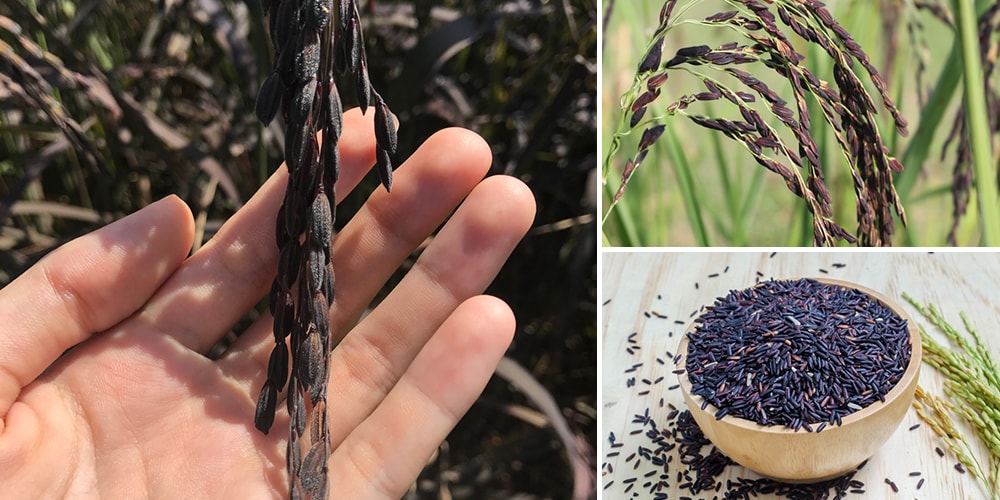
Why You Should Eat “Forbidden Rice”
Forbidden rice sounds like an intriguing gourmet meal if you hear it for the first time. If you are familiar with it, you can almost taste the nutty sweet, and chewy texture. But the question is: why should you eat forbidden rice? In this article, we will explore its incredible benefits for our health.
Why Is It Called “Forbidden Rice”?
Black rice is very rare. In ancient China, only the aristocrats and royals could consume it. It was associated with longevity and was solely reserved for the most powerful family in society.
Forbidden rice was used as a tribute food and served to emperors. Thus, it also earned the name “Emperor’s Rice.” Over time, black rice became available for commoners. It was introduced in the United States in 1995. But the moniker Forbidden Rice remains as a reminder of its superiority over its class.
Why Eat Forbidden Rice?
So, you want to eat forbidden rice solely for curiosity? You definitely can, and maybe also consider including it in your diet when you know how beneficial it is.
What gives the rice its hue is also what gives it its superior value. Forbidden rice is rich in anthocyanins, the compounds that also give eggplants and blueberries their distinctive colors.
Anthocyanins are a group of antioxidants or flavonoids used as natural remedies for many generations. They are important in preventing the accumulation of free radicals in the body to prevent chronic ailments.
Here are the many reasons why forbidden rice is worth adding to a well-rounded diet.
It’s Nutritious
Among the rice varieties, black rice contains the greatest number of nutrients. Brown rice is highly valued for its amazing health benefits and nutrients. However, black rice exceeds the protein, fiber and iron content of brown rice.
Aside from flavonoids and anthocyanins, black rice is also rich in amino acids, healthy fatty acids, micronutrients and macronutrients.
High in Antioxidants
The bran of the forbidden rice holds the greatest number of antioxidants unparalleled by any known food. The deeper the color, the higher the indication of its antioxidants.
The antioxidants in black rice are important in preventing cell damage. It inhibits oxidation to prevent the production of free radicals. It also binds with the free radicals and flushes them out of the system to protect the cells from degradation.
Prevents Cancer
By removing free radicals, the body is also protected from chronic diseases like cancer. Black rice prevents oxidative stress and boosts cancer defenses to lower the risk of diseases. In a study conducted, black rice extract may prevent breast cancer by suppressing tumor growth and preventing cell death.
Protects The Heart
Forbidden rice is heart protective, particularly in preventing plaques from forming in the arteries. It maintains a healthy cholesterol level by reducing the LDL or bad cholesterol. Black rice helps improve blood flow to prevent cardiovascular diseases.
Detoxifies The Body
Antioxidants are also important in internal cleansing and flushing out toxins. It prevents the buildup of harmful substances in the liver and boosts its function in filtering body wastes. A healthy liver regulates blood sugar and increases the metabolism and absorption of essential nutrients.
Reduces Inflammation
Inflammation in the body is responsible for developing debilitating diseases. Aside from cancer and atherosclerosis, inflammation can also trigger arthritis and allergies. The nutrients and antioxidants in black rice reduce these risks by its anti-inflammatory properties.
Improves Digestion
Forbidden rice is high in fiber – the sought-after nutrient in leafy greens, whole wheat and brown rice. Fiber is important in proper digestion and regulation of bowel movements. Consuming black rice can prevent bloating, constipation and other digestive-related issues.
Helps with Diabetes
Black rice is considered a healthy option for diabetes patients. It is low in glycemic index so sugar is absorbed slowly in the body, preventing it from spiking. It also improves insulin sensitivity for the body to utilize glucose better. Black rice reduces the sugar digested in the small intestine which is useful for diabetes management.
Manages Weight
Rich in dietary fiber, black rice curbs hunger by keeping you full longer. It is becoming a popular choice for weight reduction during the 21st century. Forbidden rice reduces triglyceride levels and decreases platelet hyperactivity. These are useful processes for preventing weight gain.
Protects Vision
Forbidden rice is full of nutrients like vitamin E, zinc and beta-carotene. Carotenoids like lutein and zeaxanthin are important micronutrients in improving eyesight. It reduces age-related eye degeneration and protects the healthy cells in the retina. These carotenoids reduce the harmful effect of UV radiation on the eyes.
Improves Brain Functions
Forbidden rice is healthy brain food that helps in improving memory and cognitive functions. Three servings of whole grains like black rice a day can do so much in protecting the brain cells from degeneration.
Benefits Skin and Hair
Rich in antioxidants, black rice also impacts skin and hair health. By reducing oxidative damage, black rice also wards off skin aging. It also protects the skin from UV damage and other environmental stressors.
Boosts Immunity
The flavonoids in black rice possess a powerful anti-inflammatory property. By curbing inflammation, the body has a better resistance against pathogens. It is beneficial in warding off common illnesses like flu and shortening the number of sick days.
A Source of Amino Acids
Amino acids are important in the proper functioning of the body. The body produces amino acids but not the essential amino acids that the body needs. They are sourced from food like black rice. These amino acids help in the repair and regeneration of damaged cells, the production of collagen and maintaining energy levels.
Gluten-Free
Forbidden rice is a delicious way of getting your needed whole grain. But unlike other whole grains like wheat and rye, black rice is naturally gluten-free. Thus, it is safe even for people with gluten intolerance and celiac disease.
How to Prepare Forbidden Rice
This superfood has an intense fragrance with a slightly sweet and nutty flavor. There are different ways of adding black rice into the diet such as in making grain salad. It can be cooked with milk and topped with nuts, fruits or chia seeds.
Black rice is sticky making it an excellent ingredient in sushi. It also makes an excellent base grain with sides of protein and veggie serving.
Learn here how to build a rainwater harvesting and purification system that will give you an endless supply of clean water to drink and cook with.
It’s important to know that black rice cooks differently than white rice. A simple recipe is the following:
Ingredients: 2 cups water/broth, 1 cup black rice, a tsp. of salt.
Steps:
- Wash and rinse the black rice. Pre-soak with water for at least 6 hours or overnight.

- In a saucepan, put the pre-soaked rice, water and salt.
- Bring the water to a boil over medium-high heat.
- Once boiling, reduce the heat and continue cooking until the rice is tender.
- Add more water if it has evaporated and the rice is not yet fully cooked. Refrain from frequently opening the lid to allow the steam to cook it well. Enjoy!

Note: The pigment in black rice can stain the cookware (and clothing) so use the ones you will not mind getting discolored. It can also taint your countertops so wipe off any black liquid immediately upon contact.
Black rice is nutritious and healthy when consumed moderately. It may still impact blood sugar levels when overconsumed. When making it a part of the diet, consume it in advisable portion sizes.
Black Rice vs Wild Rice
Forbidden rice is not the same as wild rice but is often labeled similarly. Unlike black rice, wild rice is not a whole grain and is generally inferior in nutrients. So, check the package when buying black rice.
Black rice can be long-grain or short-grain with a deep purple-black color. Wild rice, on the other hand, has a slender and elongated grain with a bold dark brown to black hue.
Takeaway
Black rice is becoming more popular in Western countries with its purported health benefits. You may find it in gourmet food markets or Asian supermarkets in small amounts if you are lucky. Not a forbidden food anymore, black rice is a sought-after product for its health benefits, delicious taste and exotic appearance.

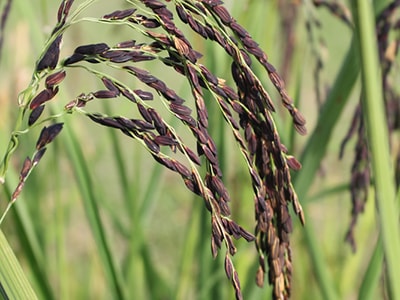
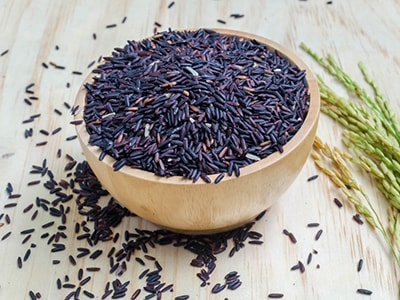
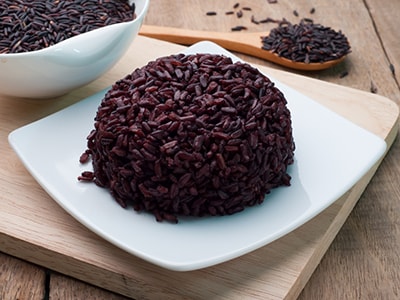
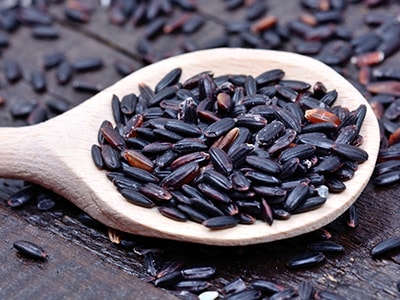
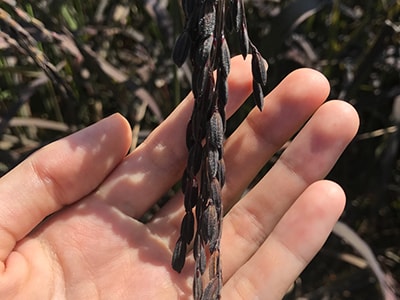

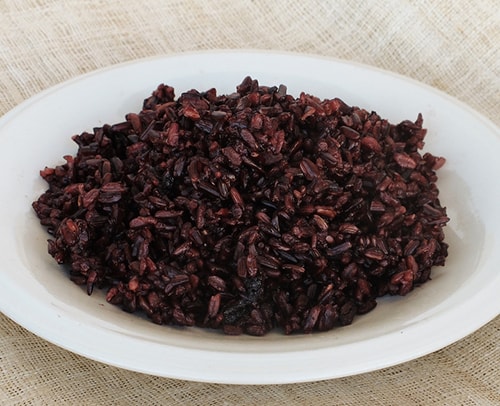
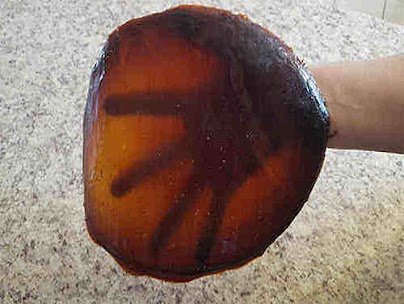
What and where is a good brand for black rice!?
We are told Ordinary rice tends to be high for n arsenic, due mostly to how it is grown. Have arsenic levels been measured in black rice? What do we know about heavy metals content in black rice? If it is organic, does that mean arsenic and other heavy meals are not present and that this has been confirmed?
Evidently there’s a debate going on (unfortunately to be expected these days)… is true forbidden black rice black to the core or is the inside white? I just learned about this rice for the first time from your great article & want to get the real thing!
Please help! Thanks.
It mentioned eat 3 x a day. Yet it warns of over consumption. So for a woman, how much, ounces can be safely eaten in a day. Also is it ok to to eat that quaniitty almost every day?
Good to know to soak it that long. I have some and didn’t do that.
Where can this be purchased?
I’ve had a bag of black rice for a very long time and actually cooked some once, but could not make myself eat any because I couldn’t get over the fact that it looked like mouse droppings. How would you know if it was contaminated with it?
Your recipe does not make clear whether or not the water you soak the rice in is the amount listed in the recipe or extra water which any not absorbed is drained off before cooking in the listed amount. I suspect the former, but as this rice is expensive, I’d like to be sure that I’m cooking it properly.